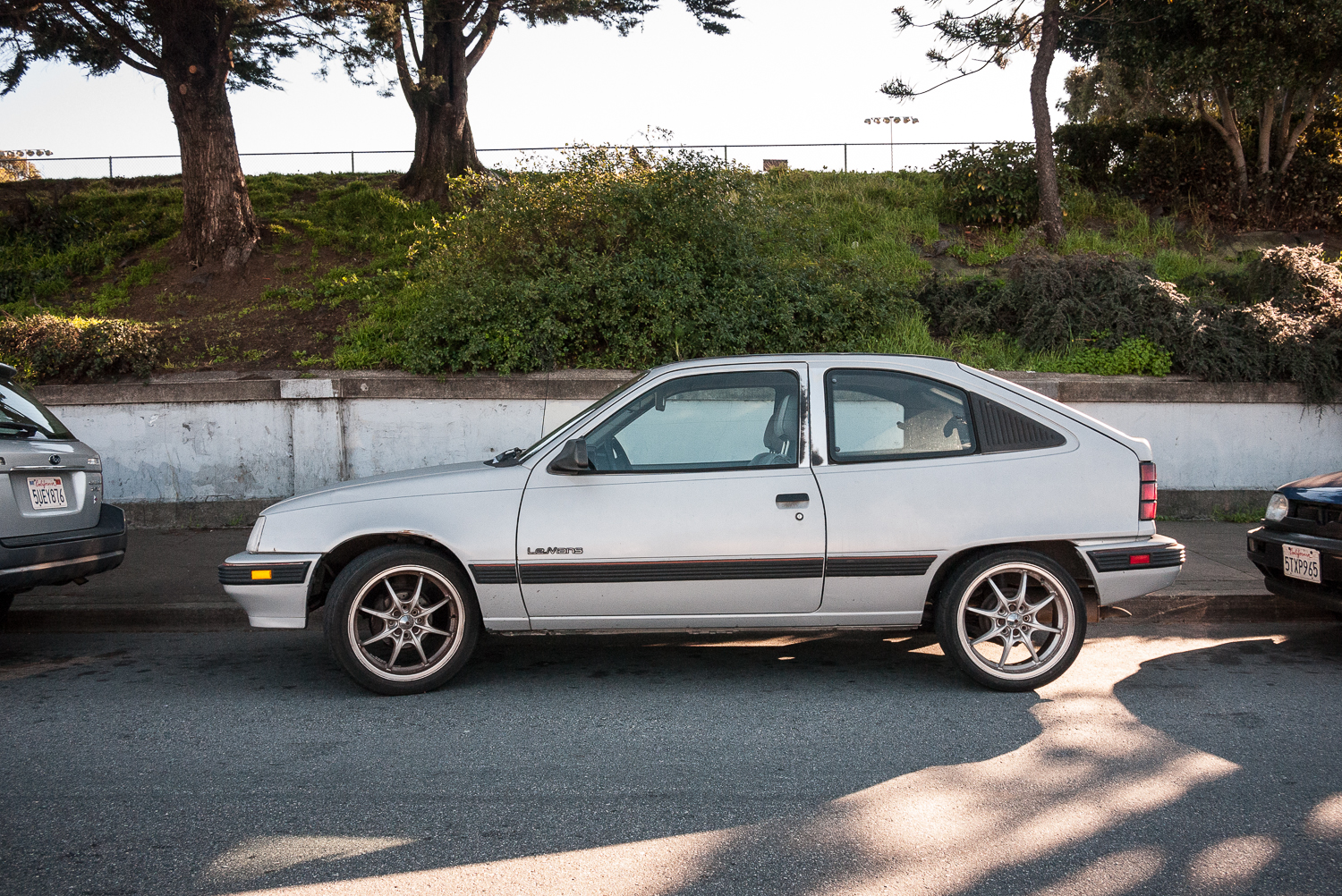I'm thinking about making some chassis mounts for a wing for a corvette as it seems like it should be pretty simple - take a piece of rectangular tube and cut into two L's. Something like this:

what thickness should I go for? Was planning on .25" but wondered if that might be overkill??
afaik, 0.25" should be fine, and is the common plate size used.
I specc'd out 3/8" plate on a previous project, and it sliced a carbon wing 'twain front to back, and bent the trunk rail on a miata. Better to have the upright bend in that situation, than really bend the car.
Think 3/16" is too narrow?
off hand, I'd guess yes... a corvette can usually easily hit 130+mph.
I don't know what rear flap you're planning on hanging onto this thing, how high above the rear deck, and the tracks you're looking to drive at. knowing those things would help narrow ballpark of the loads that would end up being pushed into these mounts. Also, keep in mind, that endplates can create side force that can combine with the column force being applied down... not too dissimilar to poking the side of a soda can while standing on it.
Also, just plain flat/vertical is likely to wind up with side-to-side vibrations. You may need to add some diagonal bracing or angle the uprights inboard/outboard between the chassis and wing mounting locations, which might help with using existing hardware locations.
In reply to stafford1500 :
Where can I find articles or videos about what forces are created from a vertical wing mount?
Is it just rules or universalness that lead to less usage of end mount wings?
F1 uses them, wrc does, lmp1 does. They must be good for something.
SDet said:
Is it just rules or universalness that lead to less usage of end mount wings?
[...] They must be good for something.
Yes and Yes. Plus yes.
There are structural benefits, via alleviating load by the main central mounts, and reducing foil structural weight that would be needed to resist spanwise-loading-induced bending moment (i.e. why airline wing tips lift up in cruise).
There's also aerodynamic benefits to end plate mounts. Since the end plate can be of the maximum depth, which can lengthen the effective span of the rear foil, by reducing the "wing tip vortex"/3d-effect. There may also be a 'flow straightening' benefit possible... depending on series/vehicle-forebody-shape.

sleepyhead the buffalo said:
SDet said:
Is it just rules or universalness that lead to less usage of end mount wings?
[...] They must be good for something.
Yes and Yes. Plus yes.
There are structural benefits, via alleviating load by the main central mounts, and reducing foil structural weight that would be needed to resist spanwise-loading-induced bending moment (i.e. why airline wing tips lift up in cruise).
There's also aerodynamic benefits to end plate mounts. Since the end plate can be of the maximum depth, which can lengthen the effective span of the rear foil, by reducing the "wing tip vortex"/3d-effect. There may also be a 'flow straightening' benefit possible... depending on series/vehicle-forebody-shape.
Okay, based on your years of experience, would I want the uprights to be an airfoil shape aimed at reducing the pressure in the middle (under the wing), or just streamlined?
I know this is all very heavy cfd and wind tunnel based, but for a swag at it. I've got a 3d printer, I can figure out how to wrap it in fiberglass, and a 100hp lemons car to test bad ideas on.
In reply to SDet :
I went and reminded myself that you're running a '89 Pontiac LeMans in LeMons...

that's probably going to change things a bit. I need to make some time to take a look at what the angle of the back window is. Does LeMons require that you run with the full rear hatch? What's the theme right now?
looking back at your post on splitters, you mentioned these being low-drag... but that rear hatch angle looks like it might be near the "uncanny [drag] valley" angle where the flow is not always staying attached?
sleepyhead the buffalo said:
In reply to SDet :
I went and reminded myself that you're running a '89 Pontiac LeMans in LeMons...

that's probably going to change things a bit. I need to make some time to take a look at what the angle of the back window is. Does LeMons require that you run with the full rear hatch? What's the theme right now?
looking back at your post on splitters, you mentioned these being low-drag... but that rear hatch angle looks like it might be near the "uncanny [drag] valley" angle where the flow is not always staying attached?
Hatch is not required, it's a lemans, we've never had a theme, and they've never asked. I have access to solidworks, and I'm trying to figure out some of the free cfd.
After missing a year of racing due to underestimating engine swap difficulties, we're going to focus on anything that doesn't hurt reliability for the sake of what if.
They claim CD of 0.30 at 0.52sq m.
In reply to SDet :
haven't forgotten about this. juggling a number of things. any objection to moving the discussion of this into a SDet/LeMonsLeMans thread in the Aero Section?
sleepyhead the buffalo said:
In reply to SDet :
haven't forgotten about this. juggling a number of things. any objection to moving the discussion of this into a SDet/LeMonsLeMans thread in the Aero Section?
No objection at all.
I'll make a write up this evening, maybe even grab a mouse and get a solid model together.
The end plates also increase the downforce of the wing by not letting the air roll off the sides/ends of the wing.
































